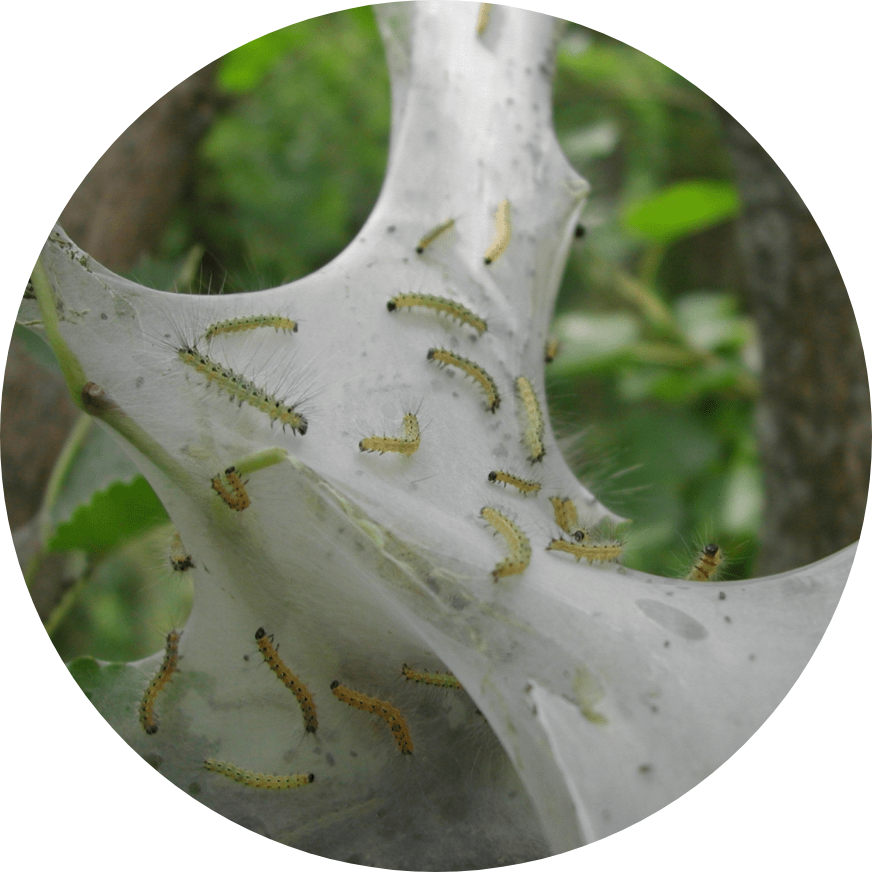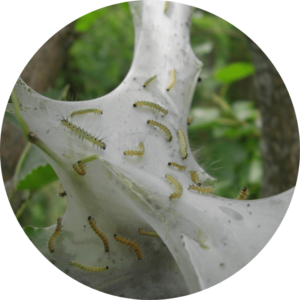Webworm

Webworms (or fall webworms) are a variety of moth that nests in the limbs of trees during the larval stage of development, causing damage in the process. Usually an inch long as larvae, webworms come in two different color combinations (red head with brown body or black head with yellow/white body) and are covered with gray hair.
A species native to North America, the worm larva will spin grey webs from the tips of branches, slowly making its way down to the trunk. The moth then consumes the leaves encased within this webbing, which often hangs from trees after the webworms have gone. While mainly a cosmetic problem, a webworm infestation can leave a tree with a significant amount of skeletonized leaves.
As with many of the insect pests that prey on trees, using aggressive chemical insecticides is not necessarily the best course of action, as it can kill some of the webworm’s naturally occurring predators. Instead, horticultural oil, insecticidal soap, and the bacteria “Bacillus thuringiensis” are recommended. Apply these substances to the leaf area just outside an area already covered by webbing. When the worms expand the webbed area to cover more food sources, they will consume the treated leaves and die.
Pruning infected areas and destroying the branches is another proven method for eliminating an infestation, although it’s important to do so before the worms reach their final instar. After this stage of development, they leave their nests and are no longer localized enough for pruning to be an option.

